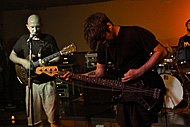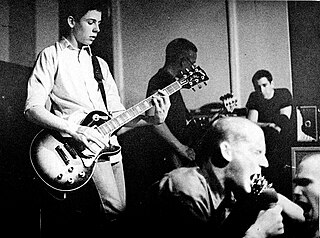
Hardcore punk is a punk rock music genre and subculture that originated in the late 1970s. It is generally faster, harder, and more aggressive than other forms of punk rock. Its roots can be traced to earlier punk scenes in San Francisco and Southern California which arose as a reaction against the still predominant hippie cultural climate of the time. It was also inspired by Washington, D.C., and New York punk rock and early proto-punk. Hardcore punk generally disavows commercialism, the established music industry and "anything similar to the characteristics of mainstream rock" and often addresses social and political topics with "confrontational, politically charged lyrics".
Emo is a music genre characterized by emotional, often confessional lyrics. It emerged as a style of hardcore punk and post-hardcore from the mid-1980s Washington, D.C. hardcore scene, where it was known as emotional hardcore or emocore. The bands Rites of Spring and Embrace, among others, pioneered the genre. In the early-to-mid 1990s, emo was adopted and reinvented by alternative rock, indie rock, punk rock, and pop-punk bands, including Sunny Day Real Estate, Jawbreaker, Cap'n Jazz, and Jimmy Eat World. By the mid-1990s, Braid, the Promise Ring, and the Get Up Kids emerged from Midwest emo, and several independent record labels began to specialize in the genre. Meanwhile, screamo, a more aggressive style of emo using screamed vocals, also emerged, pioneered by the San Diego bands Heroin and Antioch Arrow. Screamo achieved mainstream success in the 2000s with bands like Hawthorne Heights, Silverstein, Story of the Year, Thursday, the Used, and Underoath.
Indie rock is a subgenre of rock music that originated in the United Kingdom, United States and New Zealand in the early to mid-1980s. Although the term was originally used to describe rock music released through independent record labels, by the 1990s it became more widely associated with the music such bands produced.
Alternative rock is a category of rock music that evolved from the independent music underground of the 1970s. Alternative rock acts achieved mainstream success in the 1990s with the likes of the grunge, shoegaze, and Britpop subgenres in the United States and United Kingdom, respectively. During this period, many record labels were looking for "alternatives", as many corporate rock, hard rock, and glam metal acts from the 1980s were beginning to grow stale throughout the music industry. The emergence of Generation X as a cultural force in the 1990s also contributed greatly to the rise of alternative rock.
Pop-punk is a rock music fusion genre that combines elements of punk rock with power pop or pop. It is defined by its fast-paced, energetic tempos, and emphasis on classic pop songcraft, as well as adolescent and anti-suburbia themes. It is distinguished from other punk-variant genres by drawing more heavily from 1960s bands such as the Beatles, the Kinks, and the Beach Boys. The genre has evolved throughout its history, absorbing elements from new wave, college rock, ska, rap, emo, boy band pop and even hardcore punk. It is sometimes considered interchangeable with power pop and skate punk.

Rites of Spring was an American punk rock band from Washington, D.C., formed in late 1983. Along with Embrace, and Beefeater, they were one of the mainstay acts of the 1985 Revolution Summer movement which took place within the Washington, D.C. hardcore punk scene.
Post-hardcore is a punk rock music genre that maintains the aggression and intensity of hardcore punk but emphasizes a greater degree of creative expression. Like the term "post-punk", the term "post-hardcore" has been applied to a broad constellation of groups. Initially taking inspiration from post-punk and noise rock, post-hardcore began in the 1980s with bands like Hüsker Dü and Minutemen. The genre expanded in the 1980s and 1990s with releases by bands from cities that had established hardcore scenes, such as Fugazi from Washington, D.C. as well as groups such as Big Black, Jawbox, Quicksand, and Shellac that stuck closer to post-hardcore's noise rock roots. Dischord Records became a major nexus of post-hardcore during this period.
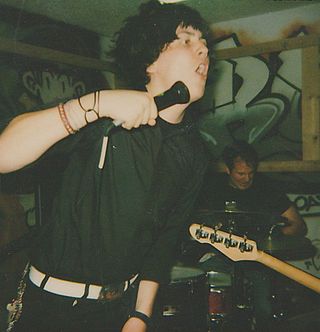
Orchid is an American screamo and hardcore punk band from Amherst, Massachusetts. Originally active from 1997 until 2002, they released several EPs and splits as well as three studio albums. The band consists of lead vocalist Jayson Green, drummer Jeffrey Salane, guitarist Will Killingsworth, and bassist Geoff Garlock.

Washington, D.C., hardcore, commonly referred to as D.C. hardcore, sometimes styled in writing as harDCore, is the hardcore punk scene of Washington, D.C. Emerging in late 1979, it is considered one of the first and most influential punk scenes in the United States.

Melodic hardcore is a broadly defined subgenre of hardcore punk with a strong emphasis on melody in its guitar work. It generally incorporates fast rhythms, melodic and often distorted guitar riffs, and vocal styles tending towards shouting and screaming. Nevertheless, the genre has been very diverse, with different bands showcasing very different styles. Many pioneering melodic hardcore bands, have proven influential across the spectrum of punk rock, as well as rock music more generally. The term melodic punk is often used to describe both melodic hardcore and skate punk bands.
Emo pop is a fusion genre combining emo with pop-punk, pop music, or both. Emo pop features a musical style with more concise composition and hook-filled choruses. Emo pop has its origins in the 1990s with bands like Jimmy Eat World, the Get Up Kids, Weezer and the Promise Ring. The genre entered the mainstream in the early 2000s with Jimmy Eat World's breakthrough album Bleed American, which included its song "The Middle". Other emo pop bands that achieved mainstream success throughout the decade included Fall Out Boy, the All-American Rejects, My Chemical Romance, Panic! at the Disco and Paramore. The popularity of emo pop declined in the 2010s, with some prominent artists in the genre either disbanding or abandoning the emo pop style.
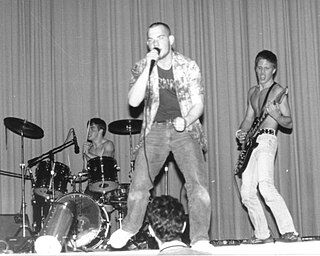
Powerviolence is an extremely dissonant and fast subgenre of hardcore punk which is closely related to thrashcore and grindcore. In contrast with grindcore, which is a "crossover" idiom containing musical aspects of heavy metal, powerviolence is just an augmentation of the most challenging qualities of hardcore punk. Like its predecessors, it is usually socio-politically charged and iconoclastic.
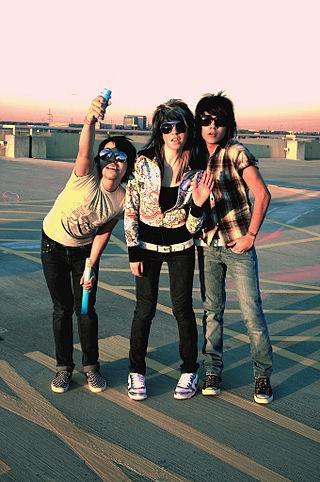
The scene subculture is a youth subculture that emerged during the early 2000s in the United States from the pre-existing emo subculture. The subculture became popular with adolescents from the mid 2000s to the early 2010s. Members of the scene subculture are referred to as scene kids, trendies, or scenesters. Scene fashion consists of skinny jeans, bright-colored clothing, a signature hairstyle consisting of straight, flat hair with long fringes covering the forehead, and bright-colored hair dye. Music genres associated with the scene subculture include metalcore, crunkcore, deathcore, electronic music, and pop punk.
Crunkcore is a musical fusion genre characterized by the combination of musical elements from crunk, post-hardcore, heavy metal, pop, electronic and dance music. The genre often features screamed vocals, hip hop beats, and sexually provocative lyrics. The genre developed from members of the scene subculture during the mid 2000s. Notable crunkcore artists include Brokencyde, Millionaires, Dot Dot Curve, and Blood on the Dance Floor.
The emo revival, or fourth wave emo, was an underground emo movement which began in the late 2000s and flourished until the mid-to-late 2010s. The movement began towards the end of the 2000s third-wave emo, with Pennsylvania-based groups such as Tigers Jaw, Algernon Cadwallader and Snowing eschewing that era's mainstream sensibilities in favor of influence from 1990s Midwest emo. Acts like Touché Amoré, La Dispute and Defeater drew from 1990s emo and especially its heavier counterparts, such as screamo and post-hardcore.
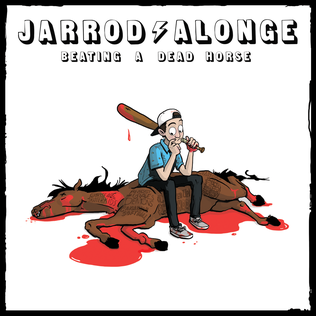
Beating a Dead Horse is the debut studio album by YouTube comedian Jarrod Alonge, self-released on May 26, 2015. The album features seven different fictitious bands created by Alonge to satirize the tropes and characteristics of alternative music genres such as metalcore, post-hardcore, pop punk, emo, progressive metal, hardcore punk and others.
Emo rap is a fusion genre of hip hop and emo music. Originating in the SoundCloud rap scene in the mid-2010s, the genre fuses characteristics of hip hop music, such as beats and rapping, with the lyrical themes, instrumentals, and vocals commonly found in emo music. Lil Peep, XXXTentacion, and Juice Wrld are some of the most notable musicians in the genre.





